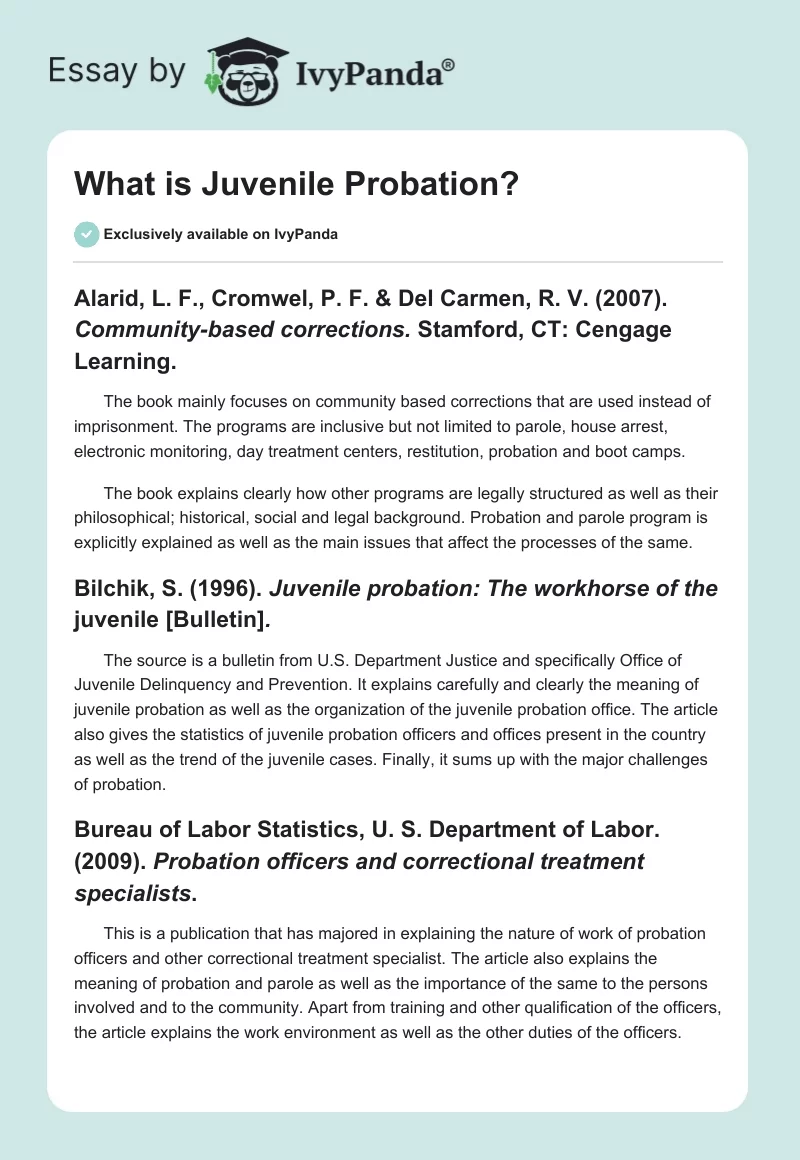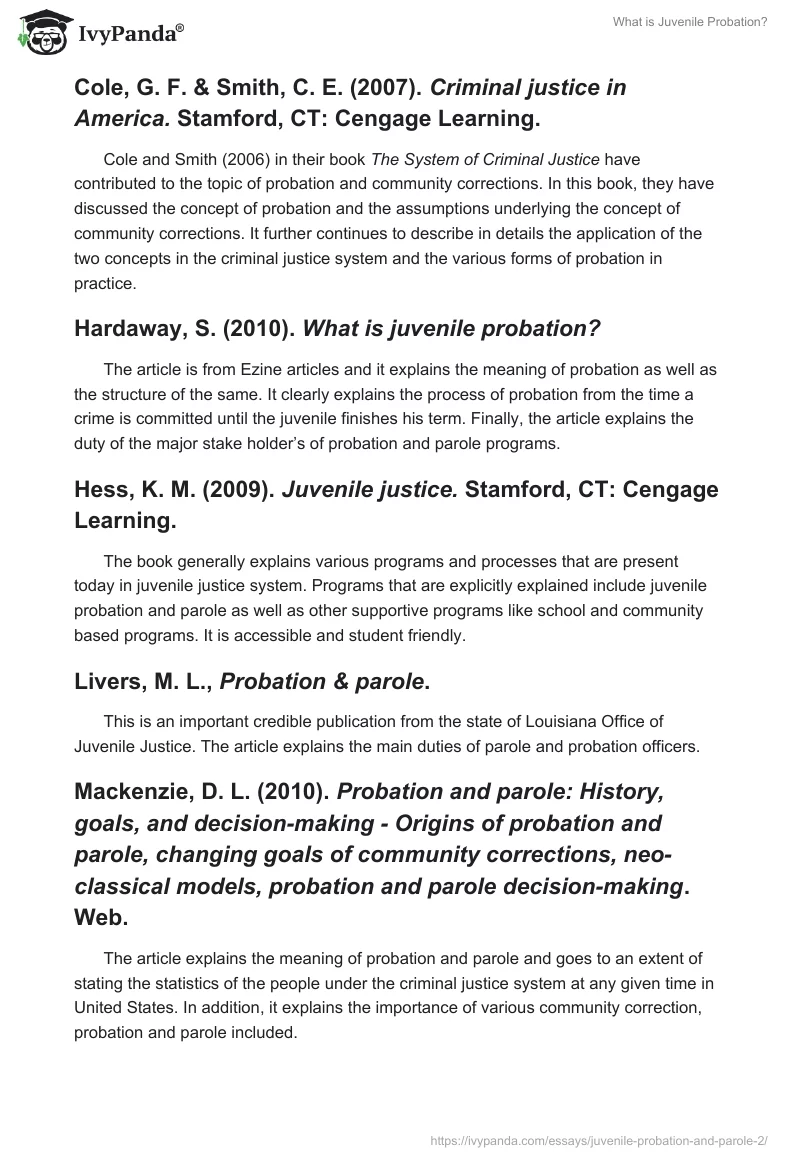Alarid, L. F., Cromwel, P. F. & Del Carmen, R. V. (2007). Community-based corrections. Stamford, CT: Cengage Learning.
The book mainly focuses on community based corrections that are used instead of imprisonment. The programs are inclusive but not limited to parole, house arrest, electronic monitoring, day treatment centers, restitution, probation and boot camps.
The book explains clearly how other programs are legally structured as well as their philosophical; historical, social and legal background. Probation and parole program is explicitly explained as well as the main issues that affect the processes of the same.
Bilchik, S. (1996). Juvenile probation: The workhorse of the juvenile [Bulletin].
The source is a bulletin from U.S. Department Justice and specifically Office of Juvenile Delinquency and Prevention. It explains carefully and clearly the meaning of juvenile probation as well as the organization of the juvenile probation office. The article also gives the statistics of juvenile probation officers and offices present in the country as well as the trend of the juvenile cases. Finally, it sums up with the major challenges of probation.
Bureau of Labor Statistics, U. S. Department of Labor. (2009). Probation officers and correctional treatment specialists.
This is a publication that has majored in explaining the nature of work of probation officers and other correctional treatment specialist. The article also explains the meaning of probation and parole as well as the importance of the same to the persons involved and to the community. Apart from training and other qualification of the officers, the article explains the work environment as well as the other duties of the officers.
Cole, G. F. & Smith, C. E. (2007). Criminal justice in America. Stamford, CT: Cengage Learning.
Cole and Smith (2006) in their book The System of Criminal Justice have contributed to the topic of probation and community corrections. In this book, they have discussed the concept of probation and the assumptions underlying the concept of community corrections. It further continues to describe in details the application of the two concepts in the criminal justice system and the various forms of probation in practice.
Hardaway, S. (2010). What is juvenile probation?
The article is from Ezine articles and it explains the meaning of probation as well as the structure of the same. It clearly explains the process of probation from the time a crime is committed until the juvenile finishes his term. Finally, the article explains the duty of the major stake holder’s of probation and parole programs.
Hess, K. M. (2009). Juvenile justice. Stamford, CT: Cengage Learning.
The book generally explains various programs and processes that are present today in juvenile justice system. Programs that are explicitly explained include juvenile probation and parole as well as other supportive programs like school and community based programs. It is accessible and student friendly.
Livers, M. L., Probation & parole.
This is an important credible publication from the state of Louisiana Office of Juvenile Justice. The article explains the main duties of parole and probation officers.
Mackenzie, D. L. (2010). Probation and parole: History, goals, and decision-making – Origins of probation and parole, changing goals of community corrections, neo-classical models, probation and parole decision-making. Web.
The article explains the meaning of probation and parole and goes to an extent of stating the statistics of the people under the criminal justice system at any given time in United States. In addition, it explains the importance of various community correction, probation and parole included.
Mueller, D. (2009). Probation office of juvenile.
The article from the Probation Office of Juvenile clearly explains the importance of juvenile probation as well as how juvenile are handled during the court processes. Finally, the article explains the responsibility of probation officers and the process of probation.
Siegel, L. J. & Welsh, B. C. (2008). Juvenile Delinquency: Theory, Practice, and Law. Stamford, CT: Cengage Learning.
The book which is very popular due to the content and the style used in writing is very significant because it not only deals with delinquency but also explains its origin. In addition, the book explains the major strategies that are used to control and eliminate the occurrence of delinquency. It contains concrete summaries and critical questions to help the student understand the content that is in the book. Since probation and parole is one of the major strategies used to eliminate and reduce delinquency, it is clearly explained therein.


